The Tosquella House was built in 1889 and designed by architect Joan Caballé in Putxet, Barcelona. It was later renovated in 1906 by Eduard M. Balcells, who gave it its current Arts and Craft appearance. The opening of Ronda General Mitre during the 1940s-50s created a new avenue within the neighborhood fabric and cut through its block, leaving the house in a complex urban situation that over time led to its deterioration.
Clara de Solà-Morales + Metronom Arquitectura Casa Tosquella
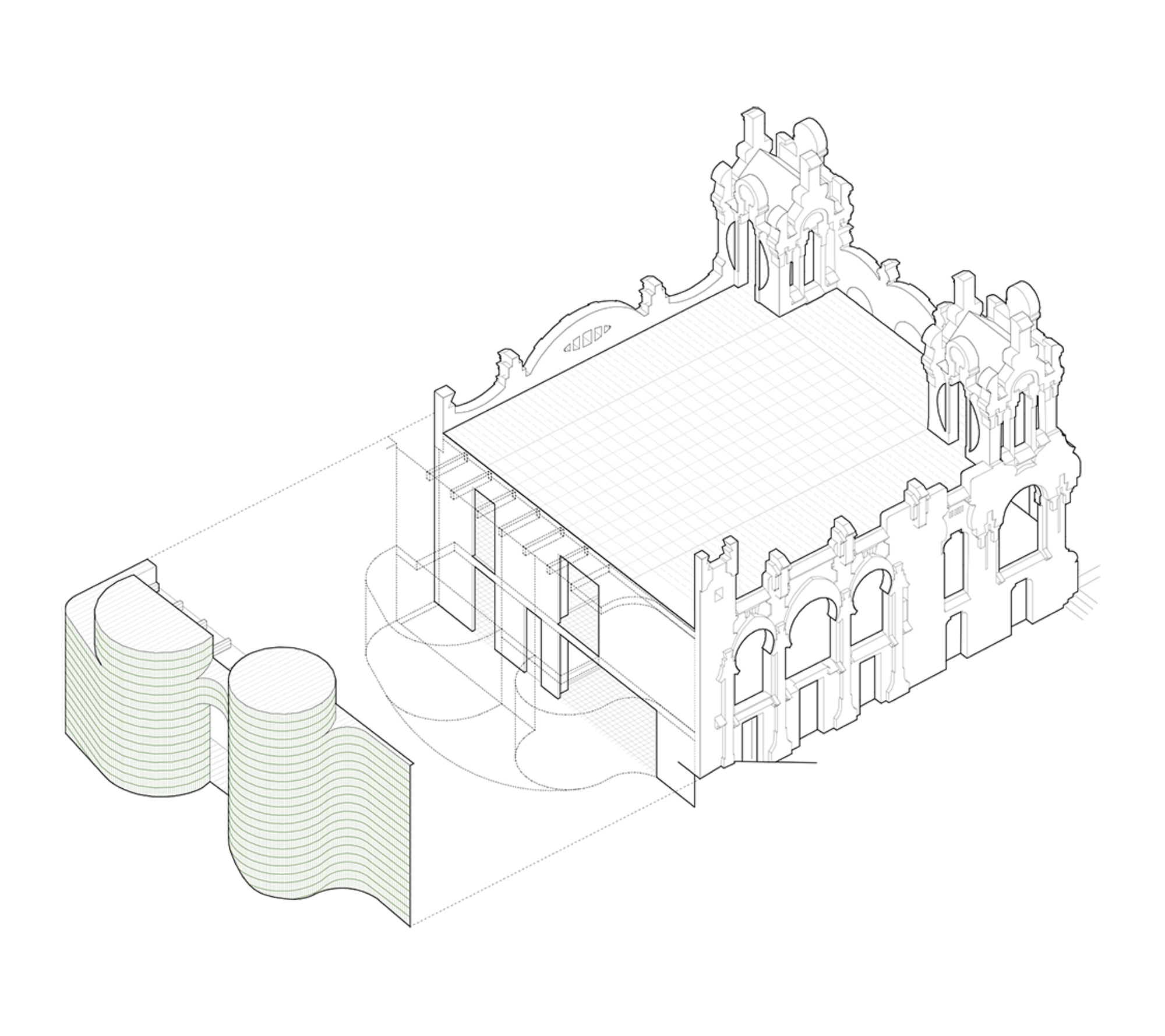
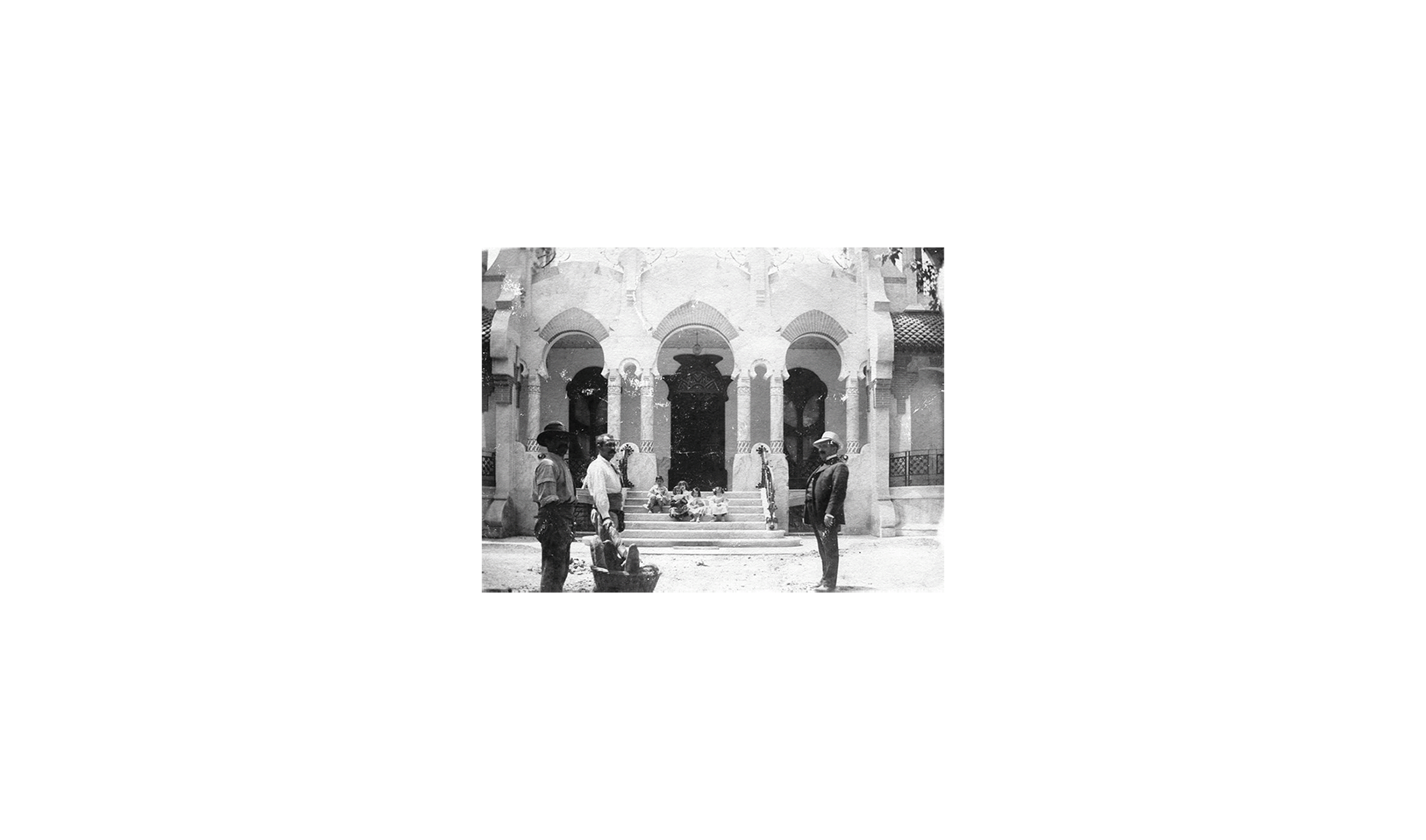
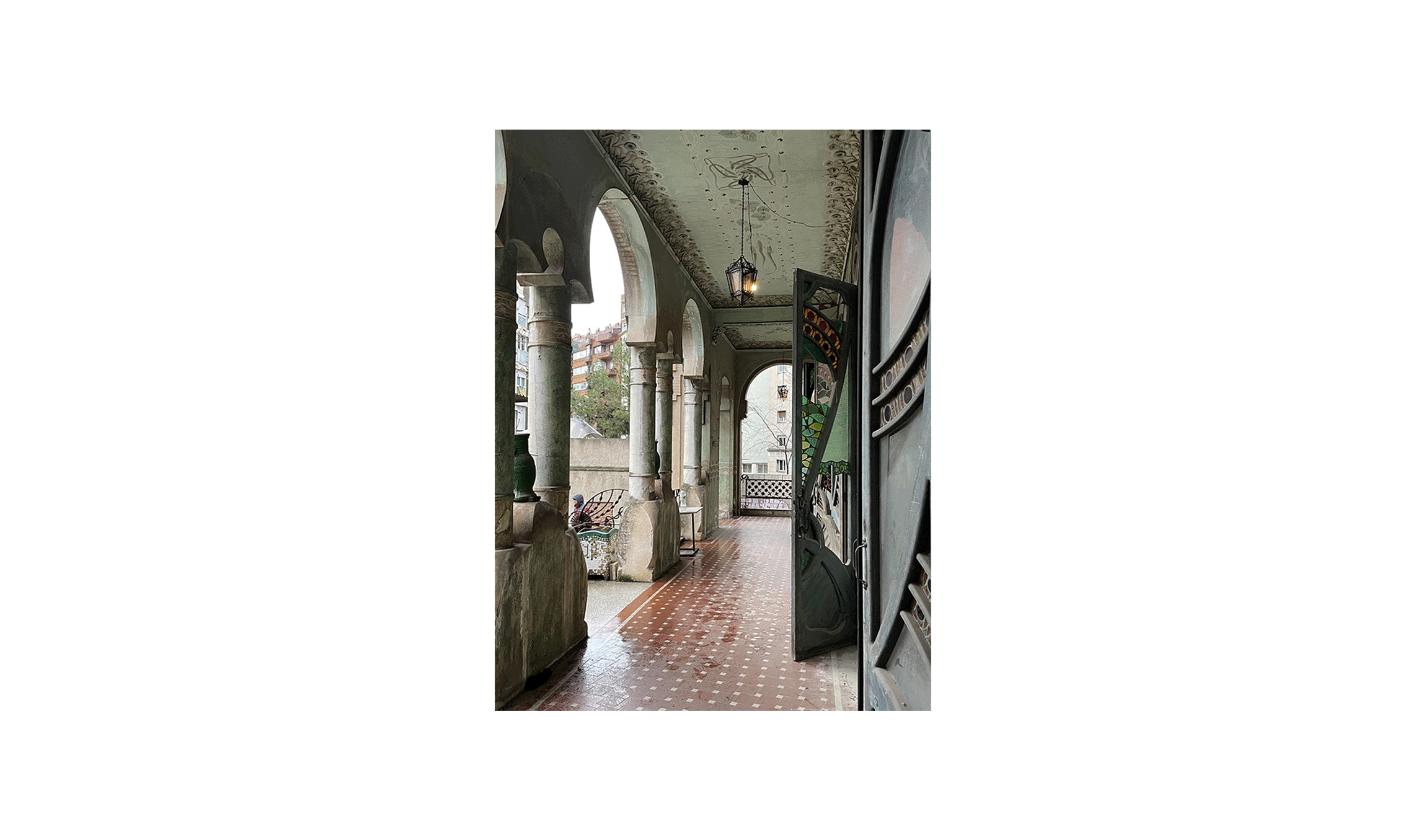

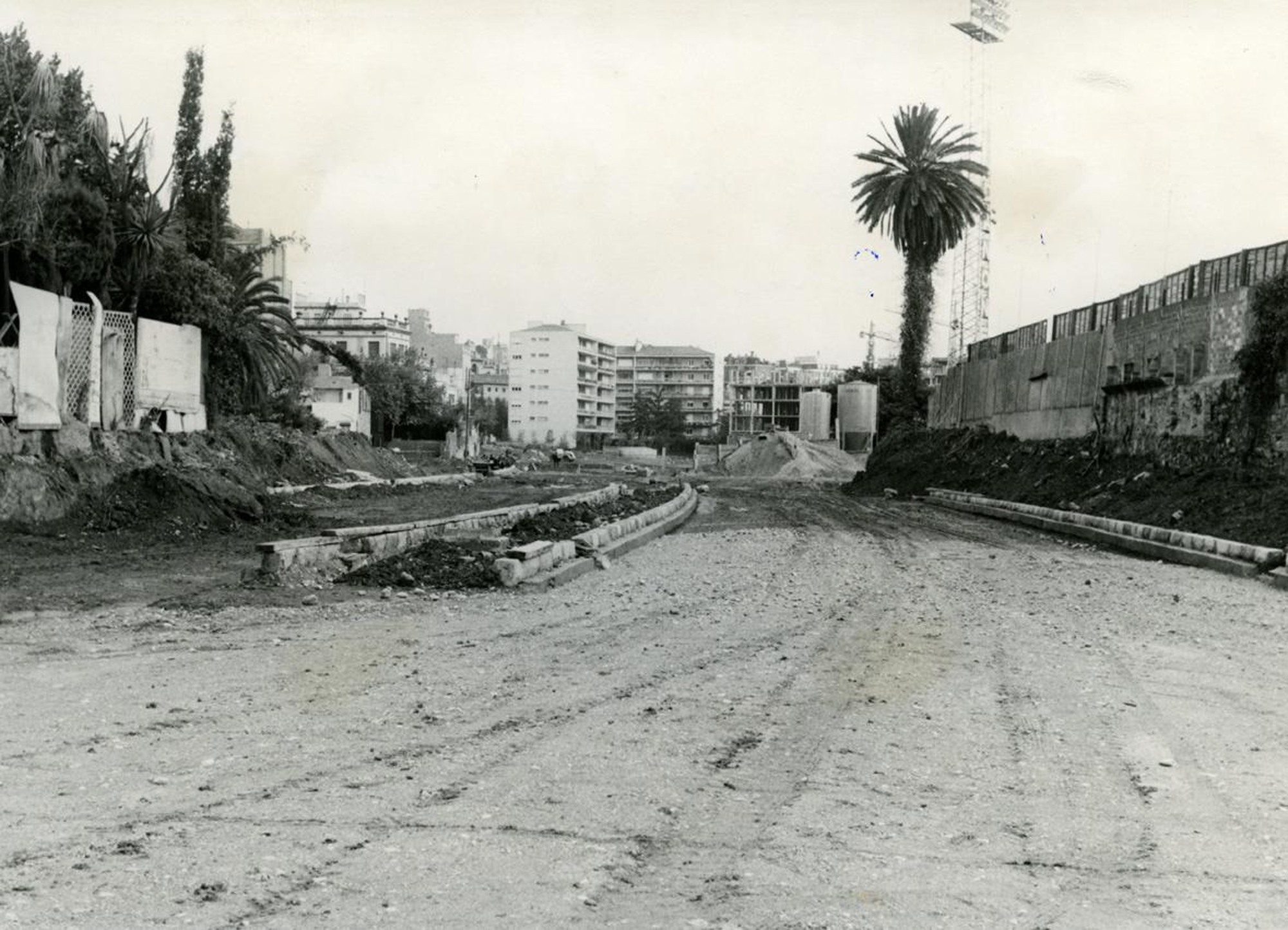
The current rehabilitation project for the house to accommodate a senior civic center involves an intervention focused on the recovery and restoration of the Arts and Crafts building and its ornamental elements. Simultaneously, it proposes a small extension that holds a new program incompatible with the heritage building; beyond that, the addition is key to resolving a typological conversion and updating of the domestic building to a facility that requires a response at certain levels: accessibility, energy, programming, urban identity, and permeability.
The project departs from the analysis of the immediate urban context to identify points from which an accessible route to the existing building can be established. This situation is found along Ronda de General Mitre at two points: one at a higher level, along the current exposed party wall, providing main access to the building on the first noble floor, and the other at a lower level, on a preexisting door on the ground floor, offering a secondary access through the gardens. Simultaneously, the analysis of the preexisting conditions confirms its coherence: the project takes advantage of the bipolarity of the new accesses to propose their connection through the prolongation of the original axis of the floor plan, thus reaffirming its directionality. This approach provides the facility with permeability and transparency.
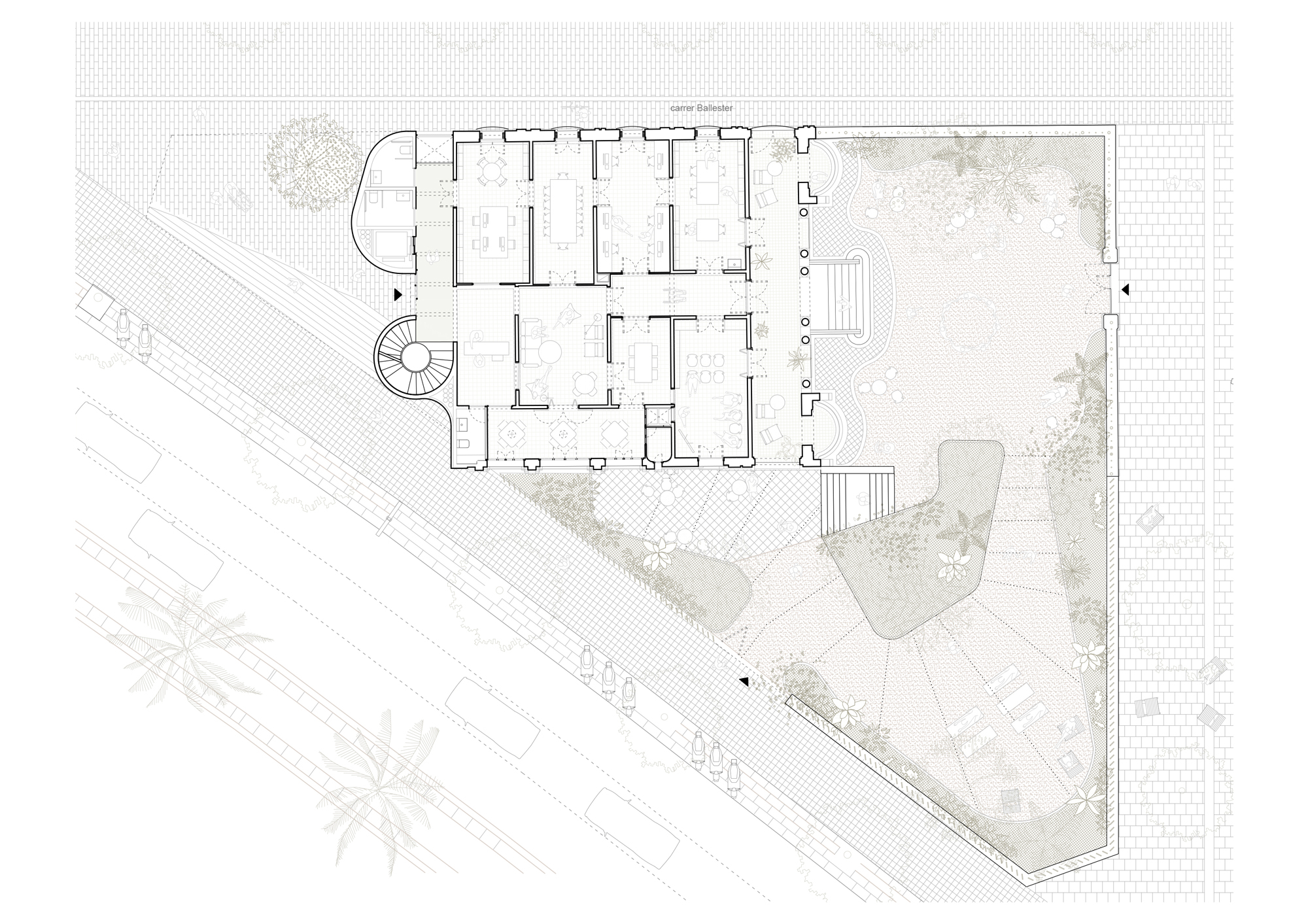

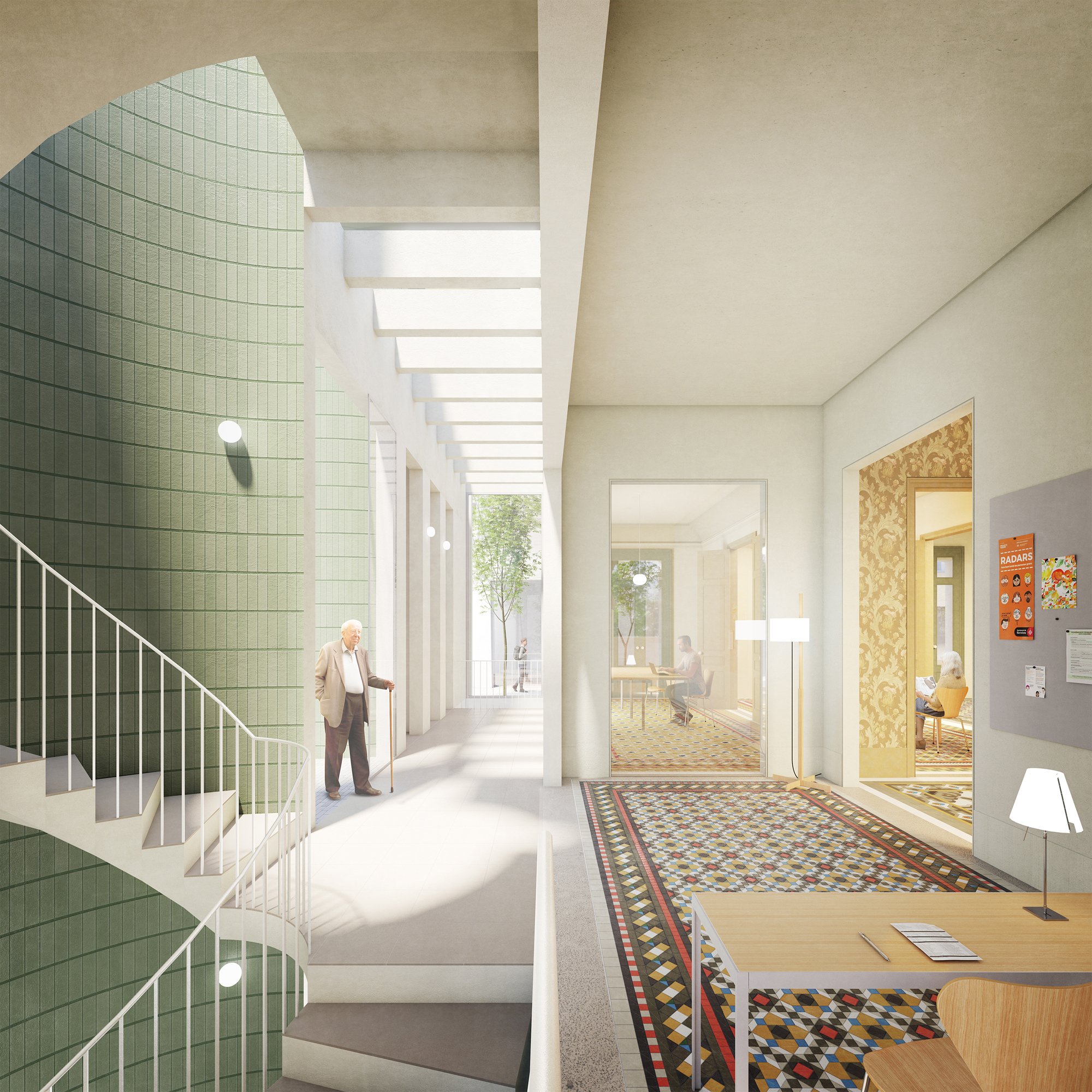
The fact that the main access points are located on Mitre, and envisioning that the house is freed from the small preexisting structures that currently surround it, the new entrance allows for a greater urban presence. This gives the house a new sense of protagonism and provides significance to the necessary construction of the new facade along the old exposed party wall of the building.

The new facade is conceived as a skin that completes the previously amputated block. It deforms to accommodate the new uses, adopting organic shapes that resonate the preexistence while maintaining the autonomy of the element. It doesn’t blend in, emphasizing the urban hardness of the corner while simultaneously providing it with a metropolitan scale. It serves as the entrance to the center, and is the culmination of the axis that structures the floor, the final element of the spatial and functional sequence.

The garden is essential to the proposal, not only for its historical value or the monumentality it imparts to the entrance, but also because it is the element that completes the spatial sequence that governs the layout. It is crucial in consolidating the backbone axis and serves as a potential programmatic extension of the center, as well as a new climatic refuge for the dens neighborhood. The intervention seeks to develop strategies that allow its relationship and dialogue with the Arts and Craft landscape tradition.

The proposal recognizes the heritage values of the Arts and Craft house with the ultimate goal of preserving and reinforcing them. On one hand, the evident ornamental value of the building draws attention to its richness and variety: a reflection of Arts and Crafts architecture applied to the domestic sphere and the expression of comfort and the quality of finishes. On the other hand, it highlights the richness and order of a spatial structure that is organized and sequential, emphasizing the relationship with outdoor spaces and inviting the consideration of the garden as another room of the house.
The full rehabilitation of both the envelope and the interior finishes is proposed, with care to restore its ornamental character and maintain its identity and the value of the ornamentation. Necessary interventions within the historic building will seek to blend with the existing ornamentation, while new interventions will aim to differentiate themselves from the heritage zone, seeking a complementary dialogue.
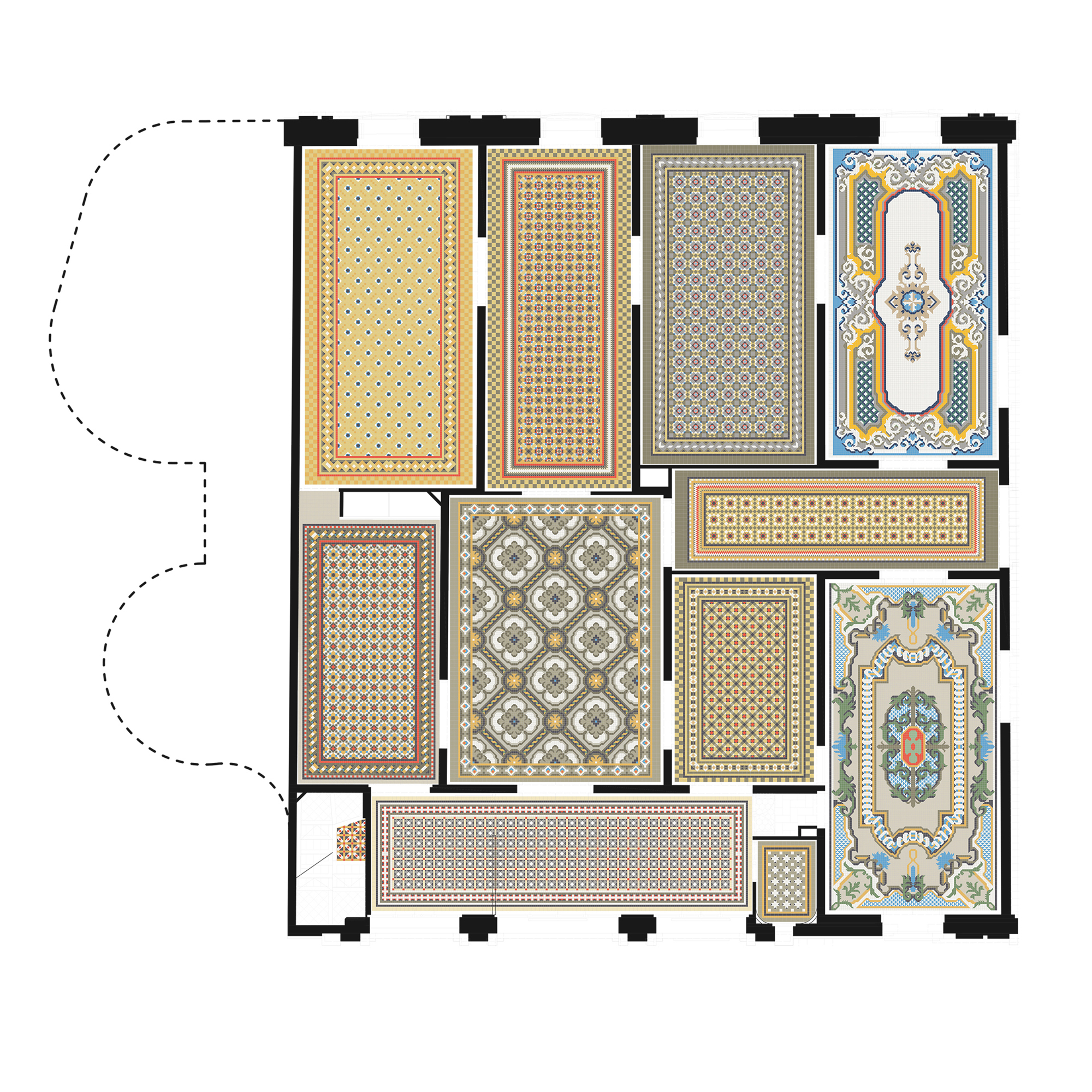
Other projects by Cadaval & Solà-Morales, Clara de Solà-Morales, Metronom arquitectura





2 Comments
A ugliest proposal is impossible !